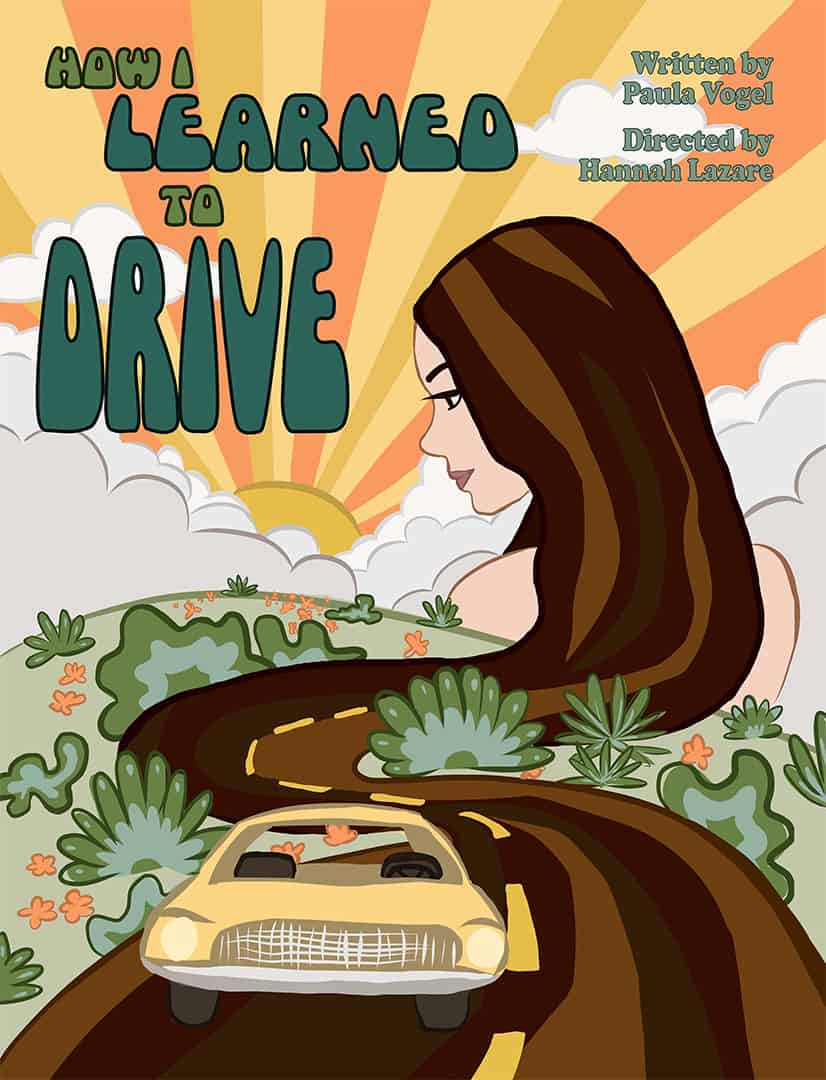On Wednesday, January 17, the Trinity College Dramatic Society (TCDS) returned to the stage with its production of How I Learned to Drive at the George Ignatieff Theatre. The play centres on the relationship of a young girl and an older man, and it has moments of humour presented alongside strong subject matter like sexual assault and violence.
The Varsity reached out to Hannah Lazare, the show’s director, to discuss the play, its adaptation from Paula Vogel’s 1997 original, and the challenges of depicting its dark content.
The Varsity: Why did you choose to direct this particular play?
Hannah Lazare: I chose this play for a number of reasons. The first time I saw the piece was during a student project exposé at my high school where my best friend Laura was directing an excerpt from it. I was struck by the way it managed to discuss complex, painful, and traumatic issues with humour, nuance, and sensitivity. She shared with me many reasons for which she loved the show, and her insight and rationale helped me fall even more in love with it. Ever since she passed away, I have wanted to put on this show. Our friendship was, in part, born out of our shared love for theatre. This show meant a lot to her and I hope that putting it out into the world honours that.
Not only is the show important to me because of the personal history I have with it, but I also wanted to give the themes in the story — sexual abuse, trauma, and memory — a chance to be heard. I think it is extremely important not to shy away from shows that deal with themes that are difficult to discuss.
TV: Can you give a brief summary of what the show is about?
HL: How I Learned to Drive is a dark comedy that, with help from the main character Lil’ Bit’s narration, takes the audience through her troubling relationship with an older man in her life. By sharing with the audience key moments in their relationship, How I Learned to Drive presents the complexity of the grooming process and the manipulation that lead to Lil’ Bit being sexually abused throughout her childhood.
TV: How has your version of the play changed or adapted from the original production?
HL: I think the biggest difference between this production and the original would be the set and props design choices. Normally, How I Learned to Drive is done with minimal set and props, making use of its Greek chorus to set the different times and places in which the story takes place. Early on in the process, I knew I wanted to do something different in this regard.
The story is, in many ways, a coming-of-age story and I wanted to highlight that fact by juxtaposing the seriousness of the story with the innocence of childhood. This led me to think that a story book could be the ideal set for the show. I was extremely lucky to find a set designer, Alexandra Georgelos, a fellow U of T student, who supported this vision and turned it into her own. She has worked tirelessly on a storybook, with which the actors are constantly interacting, that serves as the backdrop of the show.
TV: Were there any challenges in directing the play, and what is your favourite part of the production process?
HL: I think that directing a show like this is inherently challenging because it forces you to deeply engage with realities that are profoundly troubling and disturbing. That very challenge has been the best part of the process for me.
I have had the privilege to work with so many smart people — from actors to my wonderful stage manager Ishani Ranjan, each of whom brought their unique perspective on the issues being discussed in the show. As such, I felt like I was able to reflect on the way theatre can, or ought, to portray challenging themes and topics. Whether I have come to any real answers or not, I am extremely grateful to have been given the opportunity to wrestle with those important considerations.
TV: Is there anything else you’d like audiences to know about the play?
HL: Just a reminder that the content deals with incest, substance abuse, and sexual abuse.
How I Learned to Drive runs until Saturday, January 20 at the George Ignatieff Theatre.
This transcript has been lightly edited for clarity.


